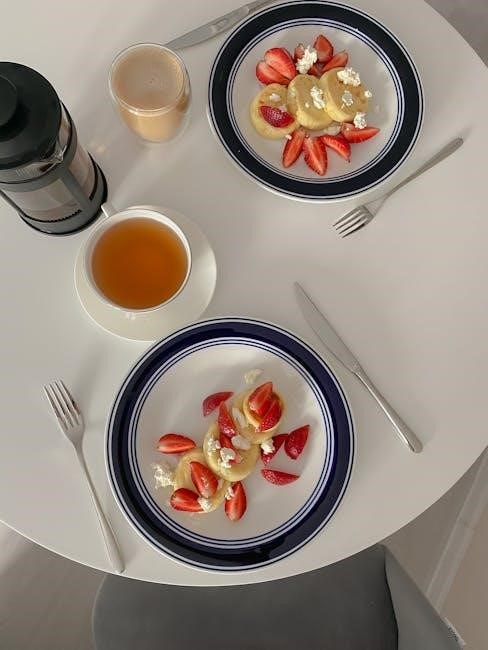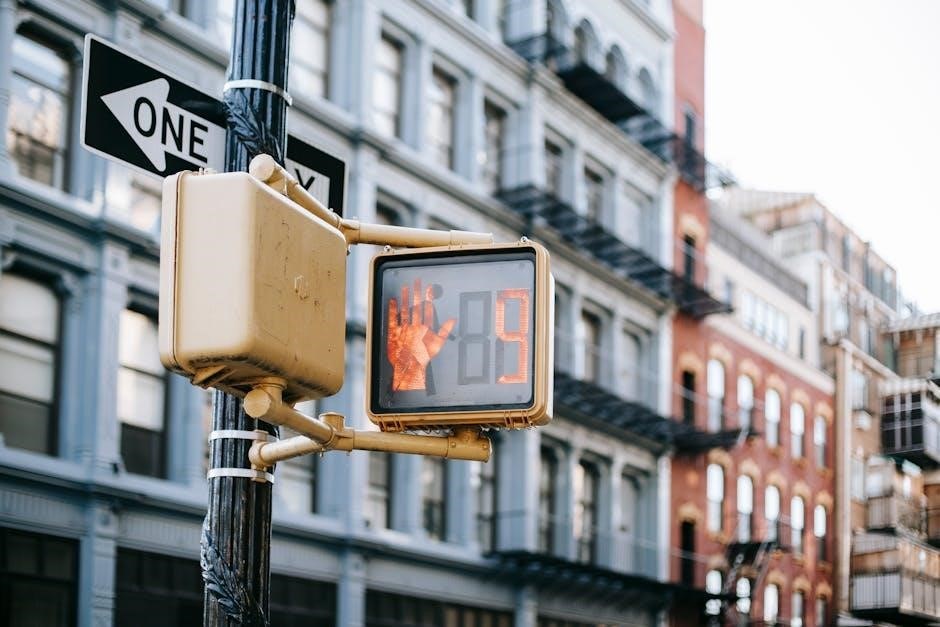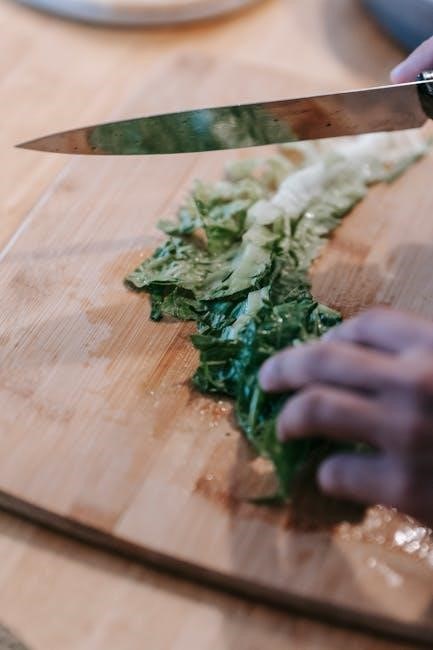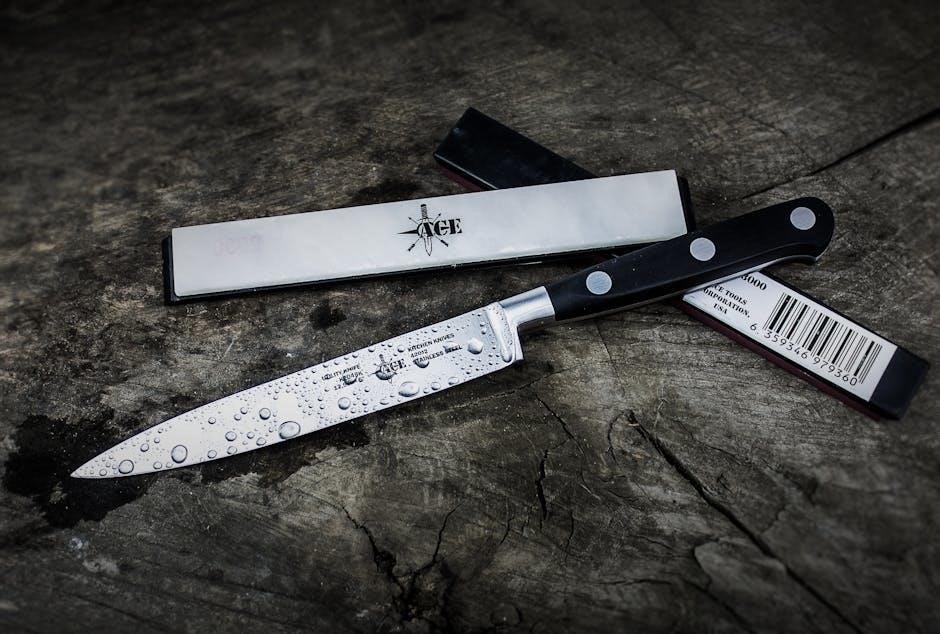A knife sharpener angle guide is essential for achieving precise edge angles, ensuring optimal cutting performance and blade durability. This guide explores how angles impact efficiency, safety, and knife longevity, helping you master sharpening techniques for various blade types.
Understanding the Importance of Sharpening Angles
Sharpening angles are crucial for achieving a knife’s optimal performance. The angle determines the balance between cutting efficiency and blade durability. A too-shallow angle may result in a razor-sharp edge but compromise longevity, while a too-steep angle can reduce cutting effectiveness. Common ranges include 20-30 degrees for chef knives, 15-20 degrees for pocket knives, and 10-15 degrees for specialty knives. Proper angles enhance safety by minimizing slippage and ensuring precise control. Mastery of sharpening angles is key to maintaining a knife’s functionality and extending its lifespan.

Why Sharpening Angle Matters
The sharpening angle directly impacts a knife’s performance and longevity. Proper angles ensure sharpness, durability, and safety, making them vital for optimal cutting efficiency and blade maintenance.
How Blade Angle Affects Cutting Efficiency
The blade angle significantly influences cutting efficiency. A sharper angle creates a finer edge, ideal for precise cuts, while a broader angle offers durability for tougher tasks. Properly set angles ensure the knife glides smoothly, reducing effort and preventing tear. For instance, a 20-30 degree angle suits chef knives for slicing, whereas a narrower 15-20 degrees is better for pocket knives needing agility. The right angle balances sharpness and strength, optimizing the knife’s performance for its intended use.
Impact of Angle on Blade Durability
The sharpening angle directly impacts blade durability. A more acute angle (e.g., 15 degrees) creates a sharper edge but may lead to faster wear and chipping. Conversely, broader angles (e.g., 30 degrees) enhance durability, making the blade more resistant to damage. Incorrect angles can cause uneven edges or excessive stress, reducing the knife’s lifespan. For heavy-duty tasks, a sturdier angle is preferred, while precise cuts require a sharper, though more fragile, edge. Balancing angle and use case is key to maintaining blade longevity and performance.
Sharpening Angle and Edge Retention
The sharpening angle significantly affects edge retention, which is the knife’s ability to stay sharp over time. A more obtuse angle (e.g., 25 degrees) typically improves edge retention, making the blade more robust against wear. However, this may reduce sharpness. A more acute angle (e.g., 15 degrees) yields a sharper edge but compromises retention. The ideal angle balances sharpness and retention, dependent on the knife’s intended use. For instance, high-carbon steel blades benefit from precise angles to maintain both sharpness and durability.
Safety Considerations Related to Sharpening Angles
Proper sharpening angles are crucial for safety, as incorrect angles can lead to unpredictable blade behavior and increased risk of injury. Sharpening at too shallow an angle may result in a brittle edge prone to chipping, while too steep an angle can cause the knife to bind or slip during use. Always maintain control and use protective gear, such as gloves, to minimize hazards. Understanding the optimal angle for your knife ensures safer sharpening and handling, reducing accidents and improving overall knife performance.

Common Sharpening Angles for Different Knives
Knives vary in sharpening angles based on their use, with chef knives typically at 20-30°, pocket knives at 15-20°, and specialty knives at 10-15° for precision cutting.
Standard Angles for Chef Knives (20-30 Degrees)
Chef knives typically use a sharpening angle of 20-30 degrees, balancing sharpness and durability. This range ensures a strong edge for chopping and slicing, while maintaining versatility. A 20-degree angle offers a sharper edge for precision cuts, while 30 degrees provides extra durability for heavy use. The wider angle helps prevent the blade from becoming too delicate, making it ideal for everyday kitchen tasks. Sharpening within this range ensures optimal performance for various culinary needs, maintaining edge retention and ease of use.
Recommended Angles for Pocket Knives (15-20 Degrees)
Pocket knives typically benefit from a sharpening angle of 15-20 degrees, offering a balance between sharpness and durability. This range ensures the blade remains versatile for everyday tasks, such as cutting ropes or opening packages, while maintaining edge retention. A narrower angle (closer to 15 degrees) enhances precision, while a wider angle (near 20 degrees) improves robustness. Consistent sharpening within this range keeps the knife reliable and ready for various situations, making it ideal for both utility and personal carry.
Sharpening Angles for Specialty Knives (10-15 Degrees)
Specialty knives, such as fillet or boning knives, often require a sharper edge, achieved with a 10-15 degree angle. This narrower angle creates a finer, more precise edge, ideal for delicate tasks like filleting fish or trimming meat. However, it also makes the blade more prone to wear, requiring more frequent sharpening. The lower angle enhances cutting efficiency in specific applications but demands careful maintenance to preserve the edge’s integrity and performance over time. Balancing sharpness and durability is key for these specialized tools.
Determining the Correct Sharpening Angle
Determining the correct sharpening angle involves assessing the knife’s intended use, measuring the existing edge, and adjusting for optimal balance between sharpness and durability. Precision is key.
Using a Sharpening Guide for Precision
A sharpening guide is a tool designed to help maintain consistent angles during the sharpening process. It attaches to the knife or sharpening stone, ensuring the blade is held at the correct angle. This tool is especially useful for beginners, as it minimizes errors and helps achieve professional results. By aligning the guide with the desired angle, users can precisely sharpen the edge, enhancing cutting efficiency and edge retention. Regular use of a sharpening guide can significantly improve sharpening consistency and extend the knife’s lifespan.
Measuring the Existing Edge Angle
Measuring the existing edge angle is crucial for maintaining consistency during sharpening. Start by carefully inspecting the knife’s edge under a bright light or using a magnifying tool. Apply a marker or Sharpie to the bevel and sharpen lightly; the marked area will indicate the current angle. For precision, use a digital angle gauge or a smartphone app designed for angle measurement. This step ensures you understand the knife’s existing geometry, allowing you to sharpen accurately without altering the intended angle. Accurate measurement is key to achieving optimal sharpness and preserving the blade’s integrity.
Adjusting the Angle Based on Knife Usage
The sharpening angle should be tailored to the knife’s primary function. For example, Chef knives, used for chopping and slicing, typically require a 20-30 degree angle for robustness and edge retention. Pocket knives, designed for precision tasks, often use a narrower 15-20 degree angle for sharper cuts. Fillet knives, needing flexibility, may use an even narrower angle of 10-15 degrees. Adjusting the angle ensures optimal performance, balancing sharpness and durability based on the knife’s intended use.
Manual vs. Guided Sharpening Methods
Manual sharpening requires skill and experience, offering precision for enthusiasts. Guided systems ensure consistency and ease, ideal for maintaining correct angles and achieving professional results.
Pros and Cons of Manual Sharpening
Manual sharpening allows for precise control over the sharpening angle, making it ideal for experienced users seeking customized results. However, it requires significant skill and practice to maintain consistency. One major advantage is the ability to sharpen various knife types without additional tools. On the downside, manual sharpening can be time-consuming and may lead to uneven edges if not done correctly. It also relies heavily on the user’s ability to feel and maintain the correct angle, which can be challenging for beginners.
Benefits of Using a Guided Sharpening System
A guided sharpening system offers unmatched precision by maintaining consistent angles, ensuring even edge wear. It minimizes errors, making it ideal for novices. The system’s design reduces the risk of over-sharpening and prevents damage to the blade. Many guided systems accommodate multiple knife types, including straight and serrated edges. They often feature adjustable angles, catering to various sharpening needs. This method is faster than manual sharpening for achieving professional results. Additionally, guided systems enhance safety by keeping fingers away from the sharpening surface. Overall, they provide a reliable, efficient way to maintain sharp, durable blades.

Electric Knife Sharpeners and Angle Control
Electric knife sharpeners maintain consistent angles for precise sharpening, ensuring optimal edge retention. Many models feature adjustable angle settings, catering to various knife types and sharpening needs efficiently.
How Electric Sharpeners Maintain Consistent Angles
Electric knife sharpeners use preset angle settings and precision engineering to ensure consistent sharpening. Many models feature built-in angle guides that automatically align the blade, preventing human error. These devices often include advanced mechanisms to monitor and adjust the sharpening angle in real-time, ensuring uniform edge retention. Some electric sharpeners also incorporate sensors to detect the blade’s current angle and adjust accordingly. This technology minimizes variability, making it easier to achieve professional-level results for various knife types, from chef knives to pocket knives, without the need for manual angle calculation.
Adjusting Angles on Electric Sharpening Devices
Adjusting angles on electric sharpening devices is typically straightforward, with most models offering adjustable dials or preset settings. Users can select specific angles, such as 20° for chef knives or 15° for pocket knives, ensuring the correct edge for their blade type. Advanced models may feature digital controls for precise angle selection, while others rely on mechanical adjustments. Proper adjustment ensures optimal sharpening results, maintaining the knife’s intended performance and edge retention. Always refer to the device’s manual for specific instructions on angle customization and maintenance.
Maintaining Consistency in Sharpening Angles
Maintaining consistent sharpening angles ensures even results and prevents uneven wear. Use a guide or consistent strokes to keep the angle steady, achieving precise and effective sharpening every time.
Techniques for Consistent Angle Maintenance
To maintain consistent angles, use a sharpening guide or marker to mark the desired bevel. Lightly draw the edge against the stone, ensuring equal pressure on both sides. Repeat strokes evenly, checking progress with a magnifying glass or light reflection. For manual sharpening, focus on the blade’s existing angle and use steady, controlled motions. Regular practice enhances muscle memory, helping to maintain precision and consistency across sharpening sessions.
Common Mistakes in Angle Consistency
One common mistake is inconsistent pressure, leading to uneven edges. Over-sharpening or applying too much force can alter the angle. Another error is not aligning the blade correctly with the guide. Failing to check progress periodically also disrupts consistency. Using incorrect stone grit or improper stroke direction further exacerbates these issues. Novices often overlook the importance of maintaining the original angle, which can degrade the knife’s performance. Awareness and careful technique are key to avoiding these pitfalls and achieving consistent results in sharpening.

Using a Sharpening Steel for Angle Maintenance
A sharpening steel helps maintain the knife’s edge angle by honing, ensuring sharpness and efficiency with regular use, keeping the edge aligned without altering the blade’s structure.
How to Hone the Edge with the Correct Angle
Honing the edge with the correct angle ensures the knife remains sharp and functional. Using a sharpening steel, align the blade at its optimal angle and stroke gently. This process maintains the edge without removing metal, preserving the knife’s structure. Light reflection on the blade can help verify proper alignment. Regular honing extends the knife’s sharpness and efficiency, making it a crucial maintenance step for any blade.
Difference Between Sharpening and Honing Angles
Sharpening and honing angles serve distinct purposes. Sharpening angles are typically more aggressive, ranging from 20-30 degrees, used to remove metal and establish a new edge. Honing angles are finer, usually around 15-20 degrees, aimed at refining and aligning the existing edge without significant metal removal. Understanding this distinction is key to maintaining knife sharpness and longevity, ensuring optimal performance for various cutting tasks. Each process requires precise angle control to achieve desired results.
Mastering sharpening angles is crucial for optimal knife performance. By understanding angle guide principles, you can enhance cutting efficiency, durability, and safety, ensuring your knives remain sharp and reliable.
Best Practices for Sharpening Angle Guide
For consistent results, always use a sharpening guide to maintain precise angles. Regularly inspect the blade to ensure the edge aligns with your intended angle. Start with coarse grits for shaping and finish with fine grits for polishing. Store knives properly to prevent dulling. Practice on inexpensive blades to refine your technique. Keep the sharpening stone or tool clean and dry to avoid contamination. Sharpen in a well-lit area to monitor progress accurately. Stay patient and maintain steady, controlled strokes for optimal edge retention.

